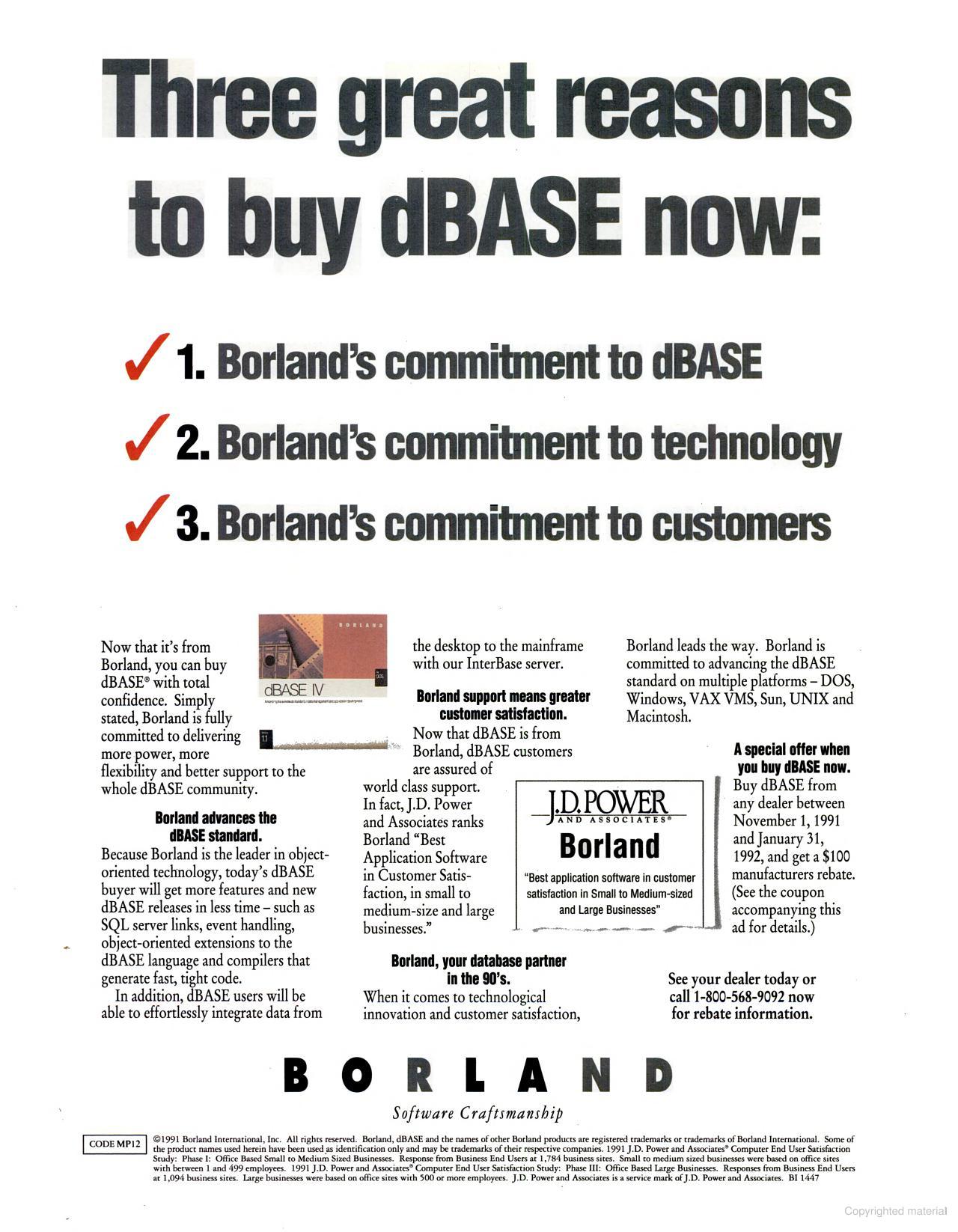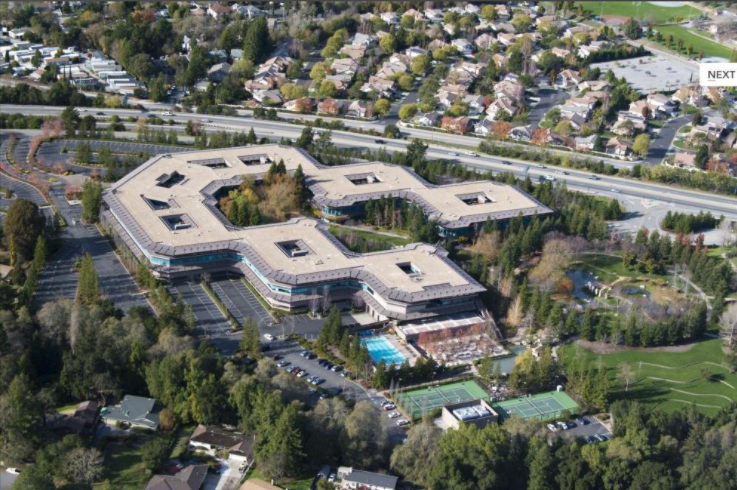 Borland Software Corporation
Borland Software Corporation
Borland International, Inc.
Headquartered in Scotts Valley, CA, Borland Ltd was started in August 1981 by three Danes - Niels Jensen, Ole Henriksen, and Mogens Glad. Having developed a few tools for the CP/M operating system, they recognised the need to have a presence in the US having started out in Denmark. They contacted Philippe Kahn, and a new US company, Borland Software Inc. was formed in 1983 with Kahn as President, CEO and chairman of the new company.
This same year they launched their first product, Turbo Pascal, which was developed by Anders Hejlsberg, who went on to develop C# and .NET for Microsoft.
In 1984 they launched Sidekick - a time organisation, notebook and calendar utility than ran as a TSR in DOS.
With development operations continuing in Denmark, 1985 saw the launch of SuperKey and Lightning. Also this year, their first company acquisition took place in the form of Analytica, developers of the Reflex database. Analytica's co-founders, Brad Silverberg and Adam Bosworth, joined Borland as part of their Engineering team in the US.
In 1986 the company floated on the London Unlisted Securities Market (USM).
1987 saw their second acquisition: Wizard Systems, with portions of their Wizard C product being incorporated into Turbo C. The first version of Turbo C arrived in May of this year, which saw the departure of Neils Jensen whose team had been developing a new set of development tools for Borland before this acquisition took place. He left to form Jensen & Partners International (JPI), later rebranded as TopSpeed. Also in 1987, Borland acquired the BASIC/Z compiler from Robert "Bob" Zale which became Turbo BASIC. They also acquired Ansa Software who had written the Paradox database management product.
1989 was a busy year for Borland. The company went public on the NASDAQ stock exchange, forming Borland International Inc. They launched the Quattro Pro spreadsheet with enhanced charting capabilities, and were sued by Lotus Development Corp. for copyright infringement based on the similar look and feel of Quattro and Lotus 1-2-3. Borland won the litigation, but it then went to the Supreme Court which concluded as a tie.
 In September 1991, Borland International bought out Ashton-Tate, including their dBase and InterBase databases. dBase had been the market leader in the world of databases for many years, but in 1988 Ashton-Tate filed a lawsuit against Fox Software on the grounds on copyright infringement. This, and a flawed design of dBase IV 1.0 caused dBase to lose ground in the market resulting in financial difficulties for Ashton-Tate. They had previously been responsible for setting the language standard for databases, known as the dBase standard, but this soon led to others adopting a broader standard which was dubbed "XBase", and included such things as anticipated data file format, index file formats and would soon extend to data dictionaries. After the buyout, Borland committed to continuing and expanding the power of the XBase standard with new versions of dBase and InterBase.
In September 1991, Borland International bought out Ashton-Tate, including their dBase and InterBase databases. dBase had been the market leader in the world of databases for many years, but in 1988 Ashton-Tate filed a lawsuit against Fox Software on the grounds on copyright infringement. This, and a flawed design of dBase IV 1.0 caused dBase to lose ground in the market resulting in financial difficulties for Ashton-Tate. They had previously been responsible for setting the language standard for databases, known as the dBase standard, but this soon led to others adopting a broader standard which was dubbed "XBase", and included such things as anticipated data file format, index file formats and would soon extend to data dictionaries. After the buyout, Borland committed to continuing and expanding the power of the XBase standard with new versions of dBase and InterBase.
The database market was in fierce competition at this time, and in 1992 Microsoft launched Access having acquired Fox Software and their FoxPro database product. Ashton-Tate's acqusition turned out to be very costly for Borland, with its product line not designed well for an evolutionary move into a Windows GUI.
The early 90s saw a transition of Borland away from being the dominant force across all its product categories. They still held a solid market share in the software development tools space, but dBase was earning it the majority of its overall revenues, and with no Windows version in sight in 1991, in 1992 they embarked on a complete rewrite.
In January 1992, Borland launched three new products: Turbo C++ 3.0 for Windows, Borland C++ 3.0 (for DOS and Windows), and Borland C++ 3.0 for Application Frameworks.

Enterprise Technology Center, Scotts Valley, CA, just off Highway 17 in the Santa Cruz mountains
Still based in Scotts Valley, CA, Borland moved to their new headquarters at Enterprise Technology Center. The 7-building campus was built at the height of Borland's success in 1993, and comprised a massive 444,000 square feet of office space, an Olympic-sized swimming pool, tennis and basketball courts, indoor and outdoor amphitheatre and ornate water features. It cost nearly $120M to build the campus for its 1,200 employees. The campus was acquired by a Chinese invester in 2013 for 1/10th of its original cost.
In 1993 layoffs had to occur in order to keep the company afloat, around the time dBase/W was ready for shipping. Sadly it was all too little, too late, as the market had moved on, instead adopting Clipper and FoxBase. Around this time, Microsoft had begun to combine its desktop products in the form of Microsoft Office. This was extremely cost-effective for companies in comparison to buying point solutions for each: word processor, spreadsheet, database, reporting, etc. In 1993 Borland looked at merging with WordPerfect Corporation in order to create a rival to Microsoft Office. Similar to Borland, WordPerfect had struggled to move their core product to the Windows platform. The result of this merger was Borland Office, introduced at the 1993 Comdex Show, and comprised WordPerfect, Quattro Pro, and Paradox.
In October 1994, Borland sold their Quattro Pro product to Novell, including the rights for Novell to sell up to 1 million copies of Paradox for $140 million in cash. This allowed Borland to start to reposition the company to focus on its software development solutions.
In January 1995 they announced a major restructuring to focus on their software development solutions. Borland President Gary Wetsel said at the time, "Borland's roots are as a computer languages and tools company, serving the needs of the software development community. This re-engineering effort is designed to size our organization appropriately, and reflects our renewed commitment to being a leading provider of software development tools. Borland is a recognized leader in serving the needs of software developers with Borland C++, dBASE and Paradox. Our objective is to leverage our tradition for delivering the best tools into new growth opportunities, including the client-server market. Delphi95, a new visual development tool that has received multiple industry accolades, is scheduled to ship later this quarter. Our current products, with the addition of Delphi95, form the foundation of our strategy to evolve our product line to next generation solutions, keeping our customers on the leading edge of technology.". This restructuring would result in a 40% headcount reduction (approx. 650 employees), and the closure of offices in all but their core 5 locations: USA, UK, Germany, France and Japan. Because of some disagreements around this restructuring, Phillippe Kahn left Borland.
This same year, their new software development product, Delphi, arrived.
In 1997, Borland sold Paradox to Corel Corporation while retaining the development rights to the BDE (Borland Database Engine). Late that year, they acquired Visigenic, a middleware company focussed on implementations of CORBA (Common Object Request Broker Architecture), for $150M.
In April 1998, Borland International changed their name to Inprise Corporation, but this would be reversed two and a half years later (strictly speaking it was renamed to "Borland Software Corporation").
By 1999 they had 900 employees.
In 2009, Borland International was acquired in full by Micro Focus International plc.